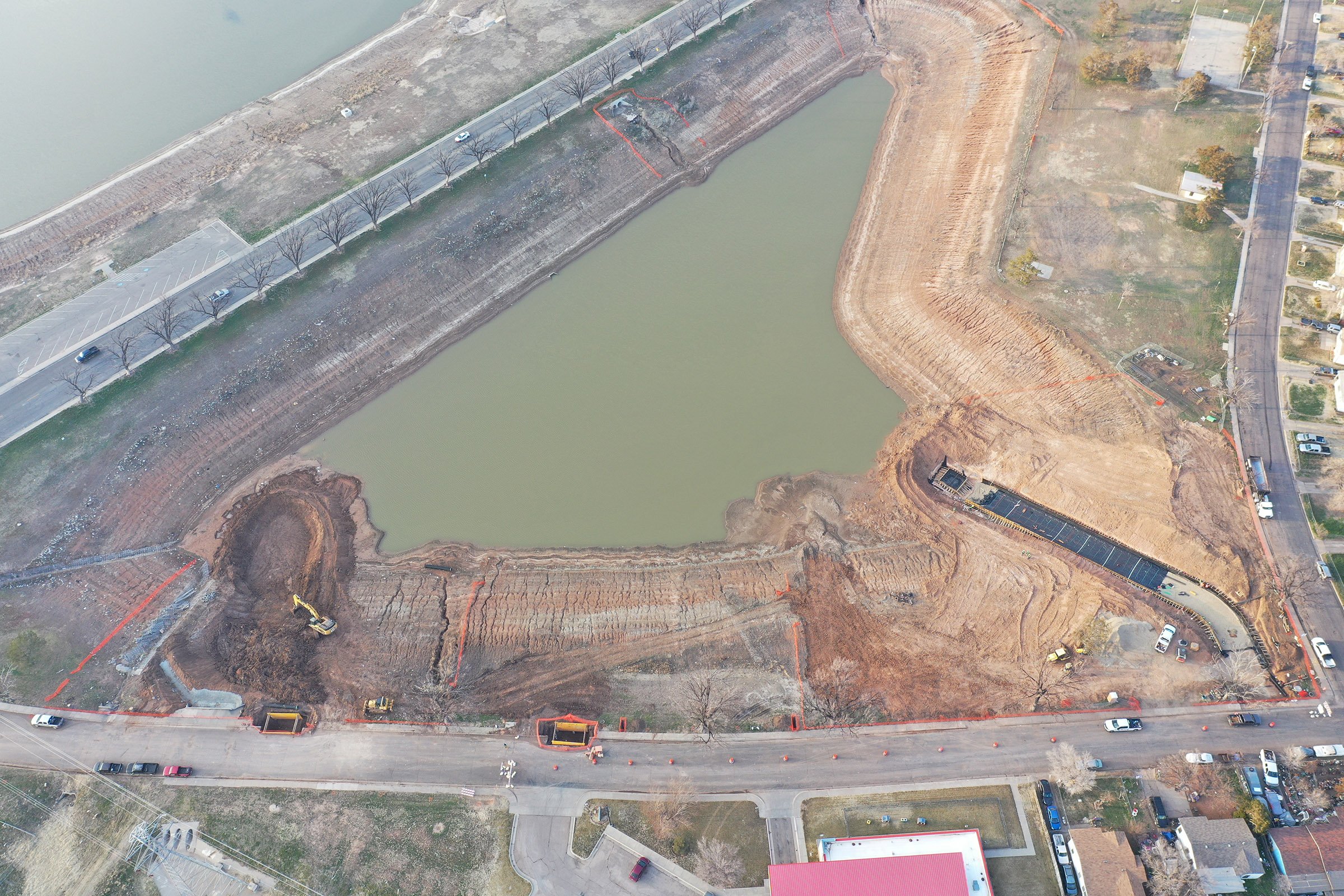Amarillo Martin Road Lake
Revitalizing Martin Road Lake – Urban Stormwater and Community Renewal
1. Problem Statement: A Lake in Decline
Martin Road Lake, nestled in the heart of Amarillo, Texas, has long been more than just a body of water. Originally a natural playa, it was designated a lake in 1952 and has since served as a familiar landmark for residents. Over the decades, however, the lake and its surrounding infrastructure struggled to keep pace with the city’s growth. Chronic flooding plagued nearby neighborhoods, the water quality declined due to stagnant conditions, and the aging recreational amenities no longer met the needs of the community. By 2022, the City of Amarillo recognized that Martin Road Lake needed more than just repairs—it needed a reimagining.
The City Council approved funding for Phases 3 and 4 of a comprehensive improvement plan, allocating $10.8 million to address these intertwined challenges. The objective was clear: mitigate flood risks, enhance water quality, and breathe new life into a public space that had lost its appeal. Civil engineers and project stakeholders collaborated to develop a solution that would integrate advanced stormwater infrastructure with public-facing improvements that could strengthen community engagement.
2. Proposed Solution: Infrastructure Meets Community Vision
The most critical piece of the puzzle was upgrading the stormwater drainage system. By redesigning the way runoff was captured and conveyed, the team aimed to reduce the frequency and severity of flooding events that had become all too common in the area. High-capacity pipes, culverts, and redirection channels were installed, allowing the system to better manage peak flows during heavy rains.
Simultaneously, the project addressed water quality by enhancing circulation within the lake and its adjacent features. Poor water movement had created stagnant zones, leading to unsightly and potentially hazardous conditions. With the new infrastructure in place, water began to flow more freely, improving oxygen levels and supporting aquatic life. This in turn made the lake safer and more enjoyable for recreational use.
But the engineering team didn’t stop there. The lake’s perimeter was reimagined as a recreational corridor. Walking trails were extended and connected to nearby neighborhoods, promoting accessibility and encouraging outdoor activity. A new fishing pond was excavated and designed with natural features that support sustainable ecosystems. Lighting and surveillance systems were added to increase safety, and parking areas were expanded and upgraded to accommodate a growing number of visitors.
3. Results: a Resilient, Revitalized Community Asset
The impact of these changes was almost immediate. Flood-related service calls from adjacent neighborhoods dropped by 65% during peak rainfall events, offering measurable proof of the system’s success. Water quality improved significantly, as evidenced by higher dissolved oxygen levels and the return of native aquatic species. Most notably, community engagement surged. Within six months of project completion, visitor counts increased by more than 40%, and the area began hosting everything from family picnics to community walks and local fishing events.
The project also offered valuable lessons. Close coordination with city officials and public stakeholders proved essential in aligning the technical solution with community expectations. The decision to blend infrastructure improvements with recreational enhancements not only broadened the project’s impact but also improved cost efficiency. And by designing with future scalability in mind, the City of Amarillo positioned itself to meet growing demands without major overhauls.
The revitalization of Martin Road Lake is a testament to the power of civil engineering to solve complex urban challenges while enriching public life. It’s a story of how thoughtful infrastructure can do more than manage stormwater—it can rebuild community connections, restore natural beauty, and create lasting civic value.




